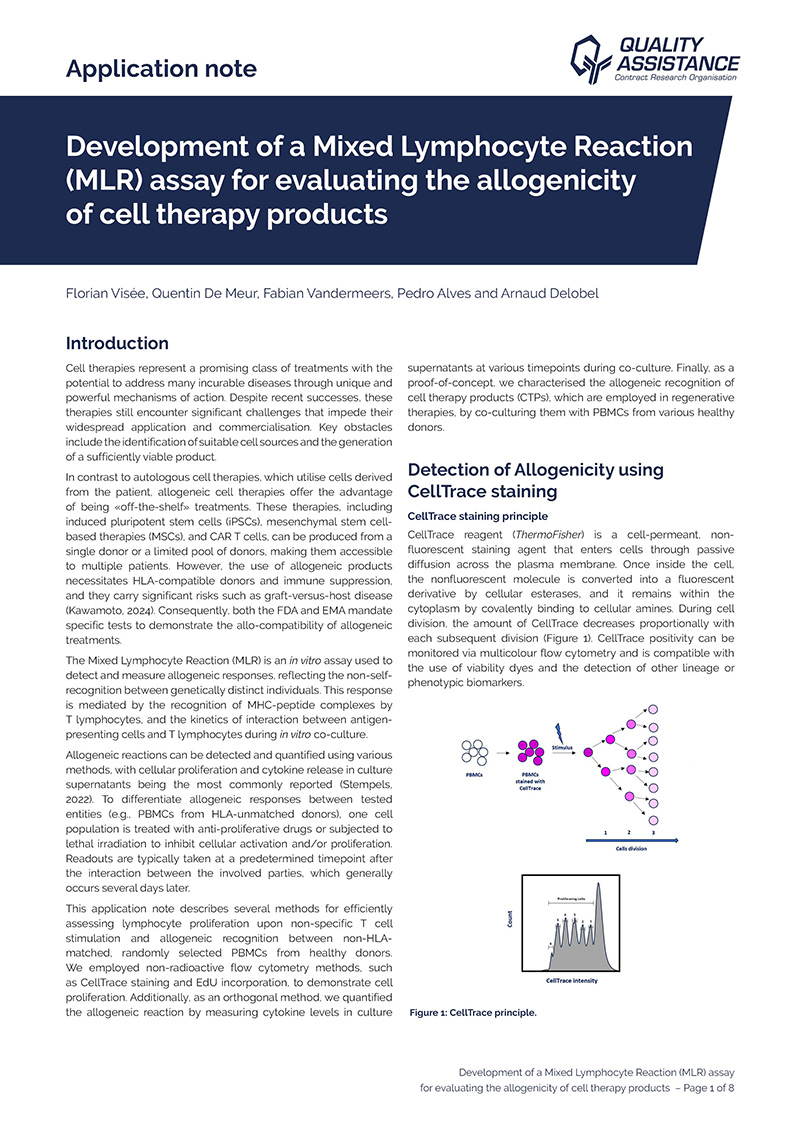Development of a Mixed Lymphocyte Reaction (MLR) assay for evaluating the allogenicity of cell therapy products

Cell therapies represent a promising class of treatments with the potential to address many incurable diseases through unique and powerful mechanisms of action. Despite recent successes, these therapies still encounter significant challenges that impede their widespread application and commercialisation. Key obstacles include the identification of suitable cell sources and the generation of a sufficiently viable product.
In contrast to autologous cell therapies, which utilise cells derived from the patient, allogeneic cell therapies offer the advantage of being «off-the-shelf» treatments. These therapies, including induced pluripotent stem cells (iPSCs), mesenchymal stem cell-based therapies (MSCs), and CAR T cells, can be produced from a single donor or a limited pool of donors, making them accessible to multiple patients. However, the use of allogeneic products necessitates HLA-compatible donors and immune suppression, and they carry significant risks such as graft-versus-host disease. Consequently, both the FDA and EMA mandate specific tests to demonstrate the allo-compatibility of allogeneic treatments.
The Mixed Lymphocyte Reaction (MLR) is an in vitro assay used to detect and measure allogeneic responses, reflecting the non-self-recognition between genetically distinct individuals. This response is mediated by the recognition of MHC-peptide complexes by T lymphocytes, and the kinetics of interaction between antigen-presenting cells and T lymphocytes during in vitro co-culture. Allogeneic reactions can be detected and quantified using various methods, with cellular proliferation and cytokine release in culture supernatants being the most commonly reported. To differentiate allogeneic responses between tested entities (e.g., PBMCs from HLA-unmatched donors), one cell population is treated with anti-proliferative drugs or subjected to lethal irradiation to inhibit cellular activation and/or proliferation. Readouts are typically taken at a predetermined timepoint after the interaction between the involved parties, which generally occurs several days later.
This application note describes several methods for efficiently assessing lymphocyte proliferation upon non-specific T cell stimulation and allogeneic recognition between non-HLA-matched, randomly selected PBMCs from healthy donors. We employed non-radioactive flow cytometry methods, such as CellTrace staining and EdU incorporation, to demonstrate cell proliferation. Additionally, as an orthogonal method, we quantified the allogeneic reaction by measuring cytokine levels in culture supernatants at various timepoints during co-culture. Finally, as a proof-of-concept, we characterised the allogeneic recognition of cell therapy products (CTPs), which are employed in regenerative therapies, by co-culturing them with PBMCs from various healthy donors.